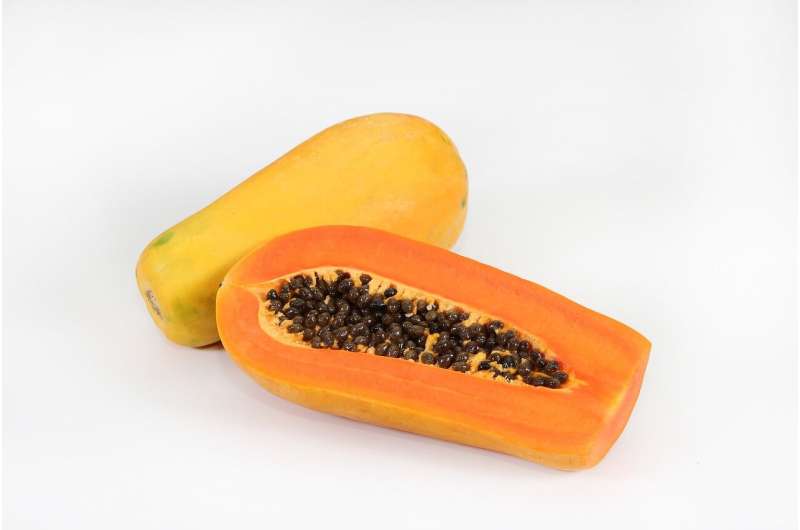Researchers organically engineer solar cells using enzymes in papaya fruit

Titanium dioxide (titania) thin films are commonly used in various types of solar cells. The fabrication methods that are currently used to create such titania films require high temperatures, as well as expensive, high-end technologies. Researchers at Delft University of Technology (TU Delft) have now developed a fully organic method to engineer porous titania thin films at relatively low temperatures.
In a recently published paper in Advanced Sustainable Systems, the Delft researchers describe how they used an enzyme called papain, which can naturally be found in the papaya fruit, in a simple dip‐coating procedure. "Gentle heating in a regular home oven resulted in the evaporation of most of the organic material, leaving behind porous titania films" , explained TU Delft researcher Dr. Duncan McMillan.
Surface area
Using the new production process, Edward van Amelrooij, MSc student in Applied Physics, created the first test devices: natural dye‐sensitized solar cells. "Current production methods require either a powerful vacuum or specialised equipment required to heat the samples to 600°C Celsius," said McMillan. "This not only makes the process very expensive, it also yields flat layers that cannot be stacked, yielding limited surface area."
The new method, in contrast, uses enzyme-driven deposition in a few minutes, followed by evaporation that can be achieved in a standard home oven. Amazingly, it turned out that up to at least 50 of these titania layers can be stacked. Moreover, Dr. Stephan Eijt, also of TU Delft, used positron annihilation spectroscopy to reveal that the titania layers were highly porous. McMillan: "This porous nature gives us access to a large surface area. We believe that this will result in high solar cell efficiencies when combined with existing technologies"
Low cost
The new production method, which should be easy to scale up, also opens the door to producing low‐cost titania films in a sustainable manner. "This can very well lead to cheaply engineered solar cells that can be integrated in the windows of houses or offices," said McMillan. The researchers are currently working on increasing the performance and stability of the solar cells by using various dyes and by tuning the porosity of the titania layers.
More information: Edward F. Amelrooij et al. Characterization of Enzymatically Synthesized Titania Thin Films Using Positron Annihilation Spectroscopy Reveals Low‐Cost Approach for Organic/Inorganic Photovoltaic Cells, Advanced Sustainable Systems (2020). DOI: 10.1002/adsu.202000003
















